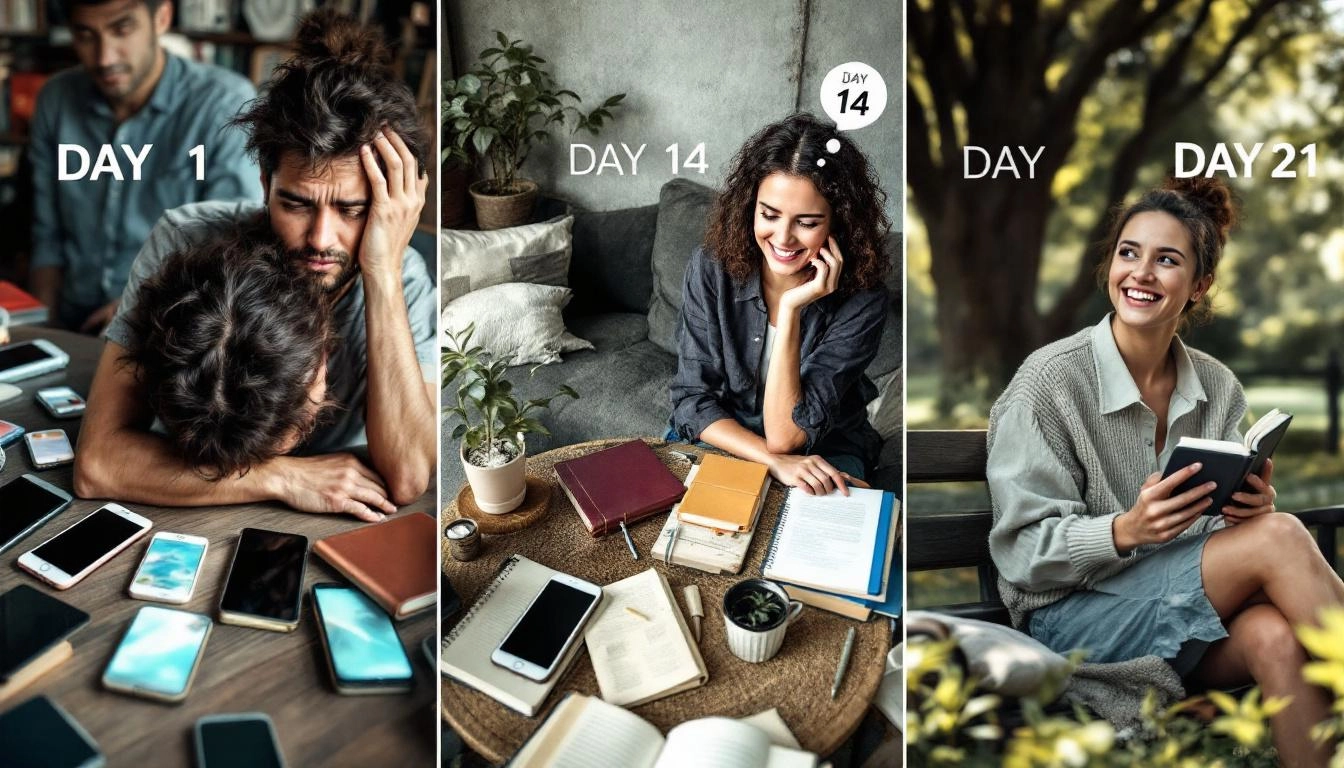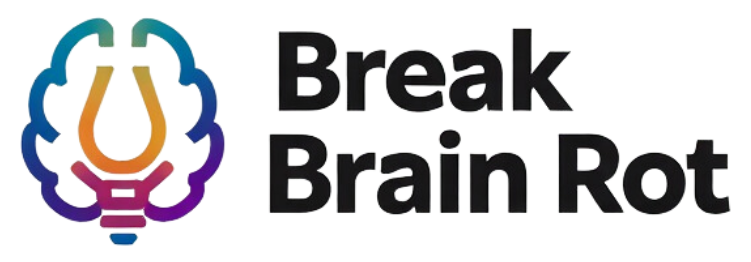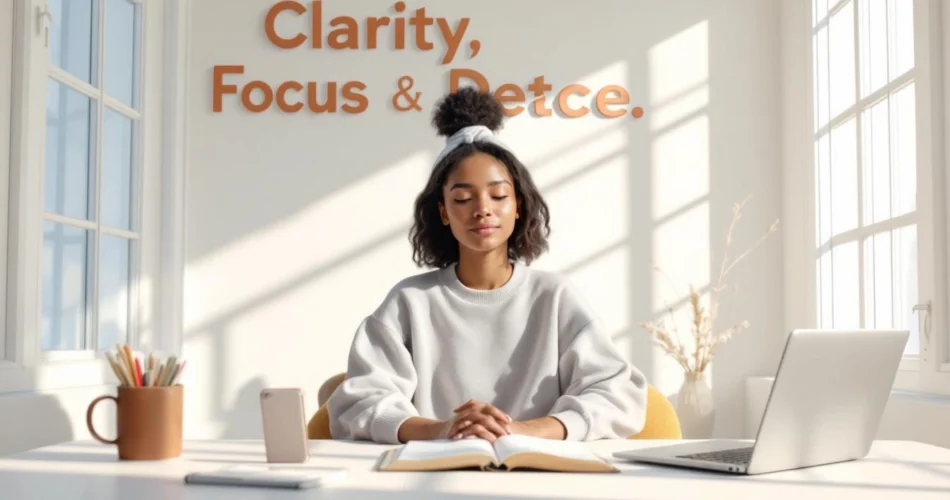What if 21 days offline could completely reset your brain? As our lives revolve around constant notifications and endless scrolling, more people are finding peace through the 21-day social media detox challenge. This experiment promises to reveal surprising 21-day social media detox results—from sharper focus to reduced anxiety. In an age where our attention is currency, digital detoxing is no longer a luxury; it’s a necessity. By the end of this article, you’ll discover exactly what happens to your mind and habits when you unplug for three weeks and how to maintain that newfound clarity long after the detox ends. (Benefits of Taking a Digital Break) For context, a recent Psychology Today study shows the undeniable link between screen time and mental health—proof that stepping back can truly change how we think and feel.
Table of Contents
- The Science Behind a 21-Day Social Media Detox
- Week-by-Week Breakdown: What to Expect During the 21 Days
- Real-Life 21-Day Social Media Detox Results
- How a Social Media Detox Transforms Your Mindset and Habits
- Maintaining the Results After the Detox
- FAQs
- Conclusion
The Science Behind a 21-Day Social Media Detox
How Constant Connectivity Affects the Brain
Every ping, like, and comment releases dopamine—the same neurotransmitter that drives our motivation and pleasure. According to Scientific American, this reinforcement loop can create dependency similar to mild addiction. A 21-day social media detox interrupts this cycle, allowing your brain to reset its reward pathways and decrease overstimulation from constant digital input.
Why 21 Days? The Psychology of Habit Formation
It takes around three weeks for new behaviors to become habits, which is why the 21-day social media detox challenge is so effective. During this time, your brain reshapes thought patterns and routine triggers, helping you replace passive scrolling with active, intentional living.
Mental Health Benefits of a Social Media Cleanse
Just a few days into your detox, you may notice calmer mornings and better focus. Reduced notifications lower stress hormones and support emotional regulation. You’ll find it easier to concentrate, sleep, and connect with yourself. (Read more on Mindfulness and Productivity Tips.)
Week-by-Week Breakdown: What to Expect During the 21 Days
Week 1 – Withdrawal and Self-Awareness
The first week feels like quitting caffeine. You’ll reach for your phone unconsciously, experience FOMO, and crave instant digital validation. This phase builds awareness of how frequently you use screens. People who track habits at this stage report shock at the number of daily hours spent online.
Week 2 – Mental Clarity and Energy Shifts
By week two, your body adjusts. The mental fog lifts, concentration sharpens, and emotional stability increases. Many participants describe feeling present and alert during daily activities. The urge to check notifications fades gradually, replaced by curiosity about off-screen experiences.
Week 3 – Emotional Balance and Perspective
During the final stretch, you begin to rediscover real-world satisfaction. Relationships deepen as you engage in in-person conversations. You may notice improved mood and decreased anxiety. Learn how to strengthen those connections through our guide to Building Mindful Relationships Offline.

Real-Life 21-Day Social Media Detox Results
Improved Concentration and Productivity
Perhaps the most consistent benefit of digital detoxing is increased productivity. When your mental energy is no longer divided between multiple apps, you regain deep focus. People often find themselves completing tasks faster, reading more, and engaging in creative projects that had previously felt impossible.
Emotional Stability and Reduced Anxiety
Statistics from Harvard Health indicate that frequent social media use correlates with higher anxiety levels. After a 21-day break, users report less comparison, greater contentment, and genuine peace. One participant summarized it best: “Logging off helped me log back into real life.”
Better Sleep and Physical Well-Being
Reduced blue light exposure in the evenings naturally supports melatonin production, which enhances sleep quality. Without the late-night scroll, your body rests better, mornings feel lighter, and overall energy improves. This mind-body improvement reinforces long-term balance.
How a Social Media Detox Transforms Your Mindset and Habits
Rediscovering Real-World Connections
Without the distraction of curated feeds, you notice the real faces and stories around you. Conversations deepen, empathy grows, and bonds feel stronger. This shift from digital interaction to genuine presence strengthens emotional intelligence.
Reclaiming Time and Purpose
By freeing hours once spent scrolling, you begin channeling them toward fulfilling goals. The 21-day social media detox challenge teaches intentionality—choosing when and how to engage online. You may rediscover hobbies or passions long forgotten. Start exploring Ways to Stay Creative Without Social Media.
Creativity and Presence in Daily Life
Silence sparks ideas. Without constant digital noise, your mind connects patterns differently, leading to bursts of creativity. Activities such as journaling, walking, or simply daydreaming can become your most productive and relaxing moments.
Maintaining the Results After the Detox
Creating a Post-Detox Digital Balance Plan
The goal isn’t to abandon technology but to manage it mindfully. Schedule screen-free mornings or tech-free weekends. Set time blocks to check apps so they don’t control your productivity flow.
Setting Boundaries and Using Social Media Intentionally
Use features like app limits and “do not disturb” modes to maintain your post-detox clarity. Curate your feed with purpose, following accounts that inspire growth or positivity instead of comparison.
Tracking Your Long-Term Progress
Keep a short journal reflecting how you feel each week. Document triggers that pull you back into old habits and celebrate small wins. For extended guidance, check out the Digital Wellness Institute for tools and support.
Frequently Asked Questions
What are the most common 21-day social media detox results that people notice first?
You’ll likely experience calmer focus, reduced anxiety, and better sleep within the first week. These abrupt yet powerful changes mark your brain’s adjustment to reduced dopamine triggers.
Is it possible to sustain the benefits after completing the 21-day social media detox challenge?
Yes. The key lies in mindful reintroduction—using social media purposefully instead of habitually. Boundaries and reflection tools can help keep your mental clarity intact.
Can a shorter social media detox deliver similar mental health improvements?
Even shorter breaks can help, but the full 21 days allow neural patterns to fully reset, giving deeper results and long-lasting equilibrium.
How do I handle FOMO during the detox?
Remind yourself that missing digital updates means gaining real-world experiences. Replace screen time with meaningful offline activities like reading or nature walks.
What if my job requires social media use?
Consider a modified detox: limit usage to work tasks only and avoid personal scrolling. Awareness alone can make a huge difference in results.
Conclusion
The 21-day social media detox results go far beyond unplugging—they represent a true mental transformation. When you silence the noise of constant connectivity, focus, peace, and creativity resurface naturally. By setting boundaries and approaching social platforms with intention, you carry forward the calm you cultivated during the 21-day social media detox challenge. Ready to begin your journey? Start by following our How to Start a 21-Day Social Media Detox Plan today and see how clarity feels when you take back control of your mind.

